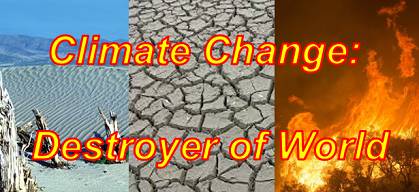[Editor’s Note: Per the U.S. Army’s definitive open source reference on the Operational Environment, TRADOC Pamphlet 525-92, The Operational Environment and the Changing Character of Warfare, climate change:
“… likely will become a direct security threat. Risks to U.S. security include extreme weather impacting installations, increased resource 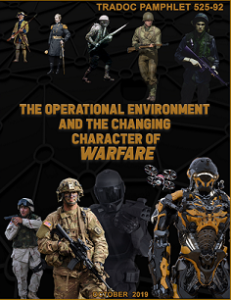 scarcity and food insecurity, climate migration increasing the number of refugees and internally displaced people`s, and the Arctic as a new sphere of competition. The addition of over seven billion people over the last century has altered geography itself, and cities now sprawl over large areas of the globe and contain almost two-thirds of the world’s population.“
scarcity and food insecurity, climate migration increasing the number of refugees and internally displaced people`s, and the Arctic as a new sphere of competition. The addition of over seven billion people over the last century has altered geography itself, and cities now sprawl over large areas of the globe and contain almost two-thirds of the world’s population.“
In today’s post, guest blogger CPT Kyle Hallowell delves into the specifics of how climate change will alter the character of warfare, triggering competition and conflict for diminishing natural resources, and directly challenge the Army’s readiness through climate-driven desertification, drought, and wildfires — Read on!]
Climate change will increase the likelihood of conflict, create unprecedented national security challenges, and jeopardize military readiness. Climate change has the power which no nation-state, actor, or issue currently  possesses: the ability to concurrently threaten all life on earth, destabilize the global economy, and upend the global world order. These facts make climate change the single greatest risk to the United States military in the twenty-first century. Climate change will increase the likelihood and severity of war, create unprecedented national security challenges, and jeopardize military readiness.
possesses: the ability to concurrently threaten all life on earth, destabilize the global economy, and upend the global world order. These facts make climate change the single greatest risk to the United States military in the twenty-first century. Climate change will increase the likelihood and severity of war, create unprecedented national security challenges, and jeopardize military readiness.
Climate change is a highly polarizing issue which has created debate ranging from its existence, effects, and the role the United States plays. The facts are obvious — increasing global temperatures, rising sea levels, and changing global geography show that the climate is changing and not in our favor. Climate change is affecting the entire globe; it poses a risk to all nations, regardless of their relationship with the United States.
Climate change occurs when changes in the Earth’s climate system result in new weather patterns that remain in place for an extend period of time. Framed in a historical context, human civilization emerged ~12,000 years ago with the Neolithic Revolution, following the end of the last ice age. Human life on earth and the rise of global temperature are inexorably linked.
Increased emission of greenhouse gases — namely carbon dioxide and chlorofluorocarbons — are directly responsible for the heat trapping effect occurring in the atmosphere. The increased amount of heat caused a chain 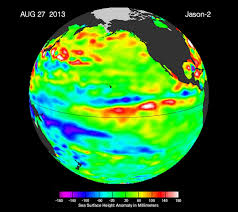 reaction of problems. Since the late 19th century, the planet’s average surface temperature has risen by 1.62 degrees Fahrenheit (0.9 degrees Celsius).1 This increased heat has been mostly absorbed by the ocean; however, the top 700 meters of the ocean have shown warming of 0.4 degrees Fahrenheit since 1969.2 These warming ocean waters and global temperatures cause ice sheets and glaciers to melt. Runoff from these melting glaciers and ice sheets combine with warming ocean water to cause rising ocean levels.
reaction of problems. Since the late 19th century, the planet’s average surface temperature has risen by 1.62 degrees Fahrenheit (0.9 degrees Celsius).1 This increased heat has been mostly absorbed by the ocean; however, the top 700 meters of the ocean have shown warming of 0.4 degrees Fahrenheit since 1969.2 These warming ocean waters and global temperatures cause ice sheets and glaciers to melt. Runoff from these melting glaciers and ice sheets combine with warming ocean water to cause rising ocean levels.
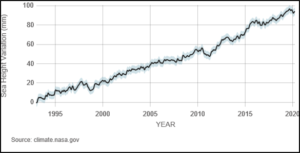
Global sea levels have risen at a rate of 3.3 millimeters per year since 1993.3 All of these events are causing extreme changes to global weather patterns, which have caused humanitarian crises and wreaked economic havoc. The number of record high temperature events have been increasing in the United States since 1950.4 The Department of Defense emitted over 59 million tons of CO2 in 2017, and is the world’s 55th largest emitter of CO2.5 Additionally the DOD is the largest consumer of energy in the United States and the largest consumer of petroleum in the world.6
Climate change will alter the character of warfare in the twenty-first century. The changes to warfare will be insidious, slow, and irreversible. The character of war is defined as passion and primordial violence, chance and uncertainty, and controlling the hand of policy. As the global landscape is altered by 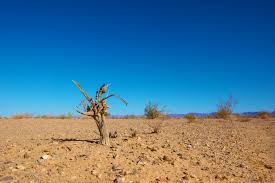 climate change, access to natural resources (e.g., clean water, arable land) will become increasingly scarce, panicking humans and causing governments to engage in increasingly bold and risky ways. Commodities that were previously thought secure will now be threatened and their possession will define the objective of state strategy. Since this threat is unprecedented, governments and non-state actors could resort to ways and means that are currently eschewed, such as the use of chemical, biological, and nuclear weapons. From a nationalistic perspective, the psychological justification for war will shift from one of “good versus bad” to “live or perish.”
climate change, access to natural resources (e.g., clean water, arable land) will become increasingly scarce, panicking humans and causing governments to engage in increasingly bold and risky ways. Commodities that were previously thought secure will now be threatened and their possession will define the objective of state strategy. Since this threat is unprecedented, governments and non-state actors could resort to ways and means that are currently eschewed, such as the use of chemical, biological, and nuclear weapons. From a nationalistic perspective, the psychological justification for war will shift from one of “good versus bad” to “live or perish.”
Human beings, when threatened with starvation, thirst, and death, will increasingly act in violent ways towards other humans. What makes climate change so important is its resultant change in the behavior of the entire human population. The need for food and water is universal and climate change threatens to reduce the amount of food and water on the planet. With scientific data and history as reliable guides, it seems inevitable that a cataclysmic conflict will erupt as competition over diminishing natural resources increases. Conflicts resulting from climate change will be unlike any yet seen. Advances in technology and competition over limited resources could result in climate-generated conflict that could potentially change the global world order, engaging previously peaceful nations, inflicting countless casualties, and costing billions of dollars.
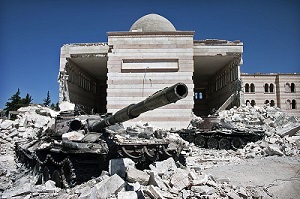
The ongoing Syrian Civil War is the most pressing example of conflict influenced by climate change. Drought lead to decreased food stores which, in combination with other factors, undermined the legitimacy of the Syrian government. Syria then collapsed into civil war, quickly drawing the United States and Russia onto opposing sides. As resources were committed, the war expanded, resulting in the Syrian government using chemical weapons against their own citizens. This conflict did not start because of climate change, but climate change in combination with other factors lead to high levels of violence. In the future, the changing climate will intensify and exacerbate the effects of other political and economic tensions.
Rising global temperatures are resulting in regional droughts, decreasing crop yields, and increasing global migration. These problems do not occur in a vacuum and often compound with failed governments and slowing or stagnant economies. All of these factors pose major challenges to the United States in the form of emerging security challenges, threats to national interests, and potential conflicts arising from migration.
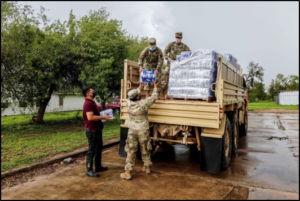
The United Kingdom’s Treasury predicts that by 2050, 200 million people will have been displaced due to climate change.7 As global temperatures continue to rise, extreme weather events will become frequent and severe. Additional predictions indicate that by 2050, the amount of land on Earth in constant drought will increase from 2% to 10%.8 These events are forcing people out of troubled zones and into regions that are more arable. The data suggests that most global migration actually stays within national borders; however, that fact does not alleviate the threat of conflict. Many nations affected by climate change migration also have ethno-religious divides that are exacerbated by new competition for resources brought on by climate change.

https://www.army.mil/article/110775/fort_irwin_rallies_to_repair_mitigate_damaged_caused_by_epic_flash_flooding
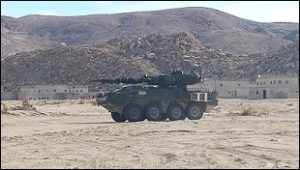
The three main climate challenges facing the United States Army are desertification, drought, and wildfires. Analyzed and dealt with individually, these issues are easy to solve, but the interconnected nature of climate change means all of these issues have synergistic effects. Desertification is the reduction of vegetation increasing the amount of runoff from precipitation events. This reduction results in increased risk from flooding and reduces the amount of useable training area. The Army is experiencing flooding in areas that historically do not have high precipitation. Fort Irwin, home of the National Training Center (NTC), is located in the high desert of southern California and serves as the preeminent certifying agency for Armored and Stryker Brigade Combat Teams. It costs millions of dollars and thousands of hours to rotate a unit through the NTC. Since 2013, Fort Irwin has experienced unprecedented flooding events resulting in a fiscal cost of $65 million.9
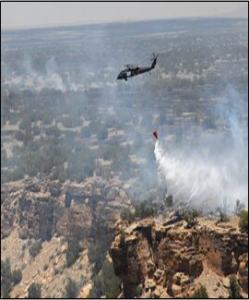
Wildfires are increasing in their severity due to drought and high winds. The Army is at an increased risk of wildfires due to the geographic location of its installations and required live-fire training. In 2018, wildfires broke out at Fort Carson, Colorado, resulting in 3,300 acres of the cantonment and adjacent training areas being burnt and three homes destroyed. Homes can be rebuilt, but usable training area takes time and programmed funding to maintain and remediate. These wildfires can rage for months and cause state governments to tighten restrictions on Live training.
Drought can severely affect base infrastructure and, when combined with high temperatures, decrease available training days. Installations, particularly those located in the Nation’s Southwest, have to redesign their water delivery systems to accommodate for their increasing distance from reliable water sources. As water becomes scarce, installations will have to choose how they use water, all of which comes at a cost. Having experience operating at Fort Bliss, Texas, the access to and transportation of water poses significant challenges to units operating in the desert. Drought also poses a risk of increased heat stroke and will lead to increased energy usage to facilitate the cooling of buildings.
The monetary cost of these events is high, while the unseen cost to Soldier readiness is higher. Land is a precious resource for the Army that must be preserved and maintained proactively. Wildfires and desertification reduces the availability of land for training, adversely impacting units’ readiness and driving up programming requirements for the Army’s Integrated Training Area Management (ITAM) Program. The risk of wildfires has led to the conservative use of live fire training ranges, resulting in decreased weapons proficiency. Fires also threaten ranges that rely on both terrain and instrumentation to emulate battlefield conditions.
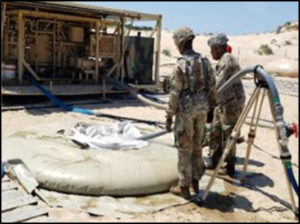
The United States needs to prepare to fight in environments where water is restricted while maintaining a strategic advantage. This means that the Army will have to develop new doctrine and equipment to get water to Soldiers. The current M-149 400 gallon water trailer will not be able to meet the challenges of a future battlefield where rapidity and protection against CBRN threats is required. This also means the United States will have ensure that its freshwater stores are protected. The Dongfeng 41, a Chinese Intercontinental Ballistic Missile capable of hitting the U.S. mainland, could contaminate freshwater sources.10 Similarly, these resources will need to be protected from terrorist attacks and unsavory domestic actors. These threats to our freshwater resources could cause massive sickness and death amongst the U.S. population.
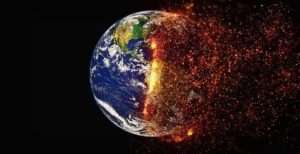 Climate change is a threat on the scale of thermonuclear war, whose insidious effects will be permanent and deadly, threatening sustenance, shelter, and life itself. Climate change will force humans into conflict with one another, forcing them to fight for access to freshwater and habitable climates. If the United States does not rapidly adapt to the changing climate, we will forfeit our leadership role among the community of nations and potentially never regain it. The United States is currently lagging behind our main competitors in strategically adapting to the changing climate; this lag could result in the permanent subordination of the United States on the world stage. To maintain the position that the U.S. currently enjoys, the DOD will need to change the doctrine, training, and equipment of the U.S. military to fight and win in adverse, changing environments. In addition, U.S. political and legislative bodies will have to embrace the science confirming climate change, accept it as reality, and begin planning for the future. The unspoken problem is the reliance on petroleum that limits technological advancement and will continue to dictate policy and strategy.
Climate change is a threat on the scale of thermonuclear war, whose insidious effects will be permanent and deadly, threatening sustenance, shelter, and life itself. Climate change will force humans into conflict with one another, forcing them to fight for access to freshwater and habitable climates. If the United States does not rapidly adapt to the changing climate, we will forfeit our leadership role among the community of nations and potentially never regain it. The United States is currently lagging behind our main competitors in strategically adapting to the changing climate; this lag could result in the permanent subordination of the United States on the world stage. To maintain the position that the U.S. currently enjoys, the DOD will need to change the doctrine, training, and equipment of the U.S. military to fight and win in adverse, changing environments. In addition, U.S. political and legislative bodies will have to embrace the science confirming climate change, accept it as reality, and begin planning for the future. The unspoken problem is the reliance on petroleum that limits technological advancement and will continue to dictate policy and strategy.
If you liked this post, check out these related posts:
Water: A Fluid Challenge for the Future, by proclaimed Mad Scientist Caroline Duckworth
On Thin Ice…, by proclaimed Mad Scientist Seth Gnesin
Climate Change as a Threat Multiplier: Part 1, by LTCOL Nathan Pierpoint
Climate Change Laid Bare: Why We Need To Act Now, by Sage Miller
Future Threats: Climate Change and Islamic Terror, by Matthew Ader
Our Arctic—The World’s Pink Flamingo and Black Swan Bird Sanctuary, by Frank Prautzsch
>>>>REMINDER: The National Security Innovation Network (NISN) “Seeing Into the Unknown” Virtual Hackathon is now open for your innovative submissions! Click here to read their Hackathon Participation Guide NOW and get your innovative ideas submitted SOONEST!!!
CPT Kyle R. Hallowell holds a Bachelor’s degree in History from Norwich University. He is currently serving as a HIMARS Battalion S4 at Joint Base Lewis-McChord.
Disclaimer: All views expressed in this post are the author’s and do not necessarily reflect those of the Department of Defense, Department of the Army, Army Futures Command (AFC), or Training and Doctrine Command (TRADOC).
1 “Climate Change Evidence: How Do We Know?” NASA. NASA, September 30, 2019. https://climate.nasa.gov/evidence/.
2 Climate Change Evidence: How Do We Know?
3 Climate Change Evidence: How Do We Know?
4 Climate Change Evidence: How Do We Know?
5 McCarthy, Niall. “Report: The U.S. Military emits more CO2 than Many Industrialized Nations [Infographic].” Forbes, Forbes Magazine, 13 June 2019, https://www.forbes.com/sites/niallmccarthy/2019/06/13/report-the-u-s-military-emits-more-co2-than-many-industrialized-nations-infographic/#24ab9e614372.
6 McCarthy, Niall. “Report: The U.S. Military emits more CO2 than Many Industrialized Nations [Infographic].”
7 Stern, Nicholas. “Stern Review on the Economics of Climate Change.” HM Treasury, October 30, 2006. https://webarchive.nationalarchives.gov.uk/20100407172811/http://www.hm-treasury.gov.uk/stern_review_report.htm
8 Migration and Development: Opportunities and Challenges for Policymakers. Macha Farrant, Anna MacDonald, Dhananjayan Sriskandarajah, April 2006.
9 Hubbard, Brooks O. “Corps Sends Team to Fort Irwin to Assess Recent Storm Damage.” Los Angeles District. U.S. Army Corps of Engineers, November 13, 2015. https://www.spl.usace.army.mil/Media/News-Stories/Article/628937/corps-sends-team-to-fort-irwin-to-assess-recent-storm-damage/.
10 Arg. “DF-41.” Military. Accessed October 7, 2019. http://www.military-today.com/missiles/df_41.htm.

